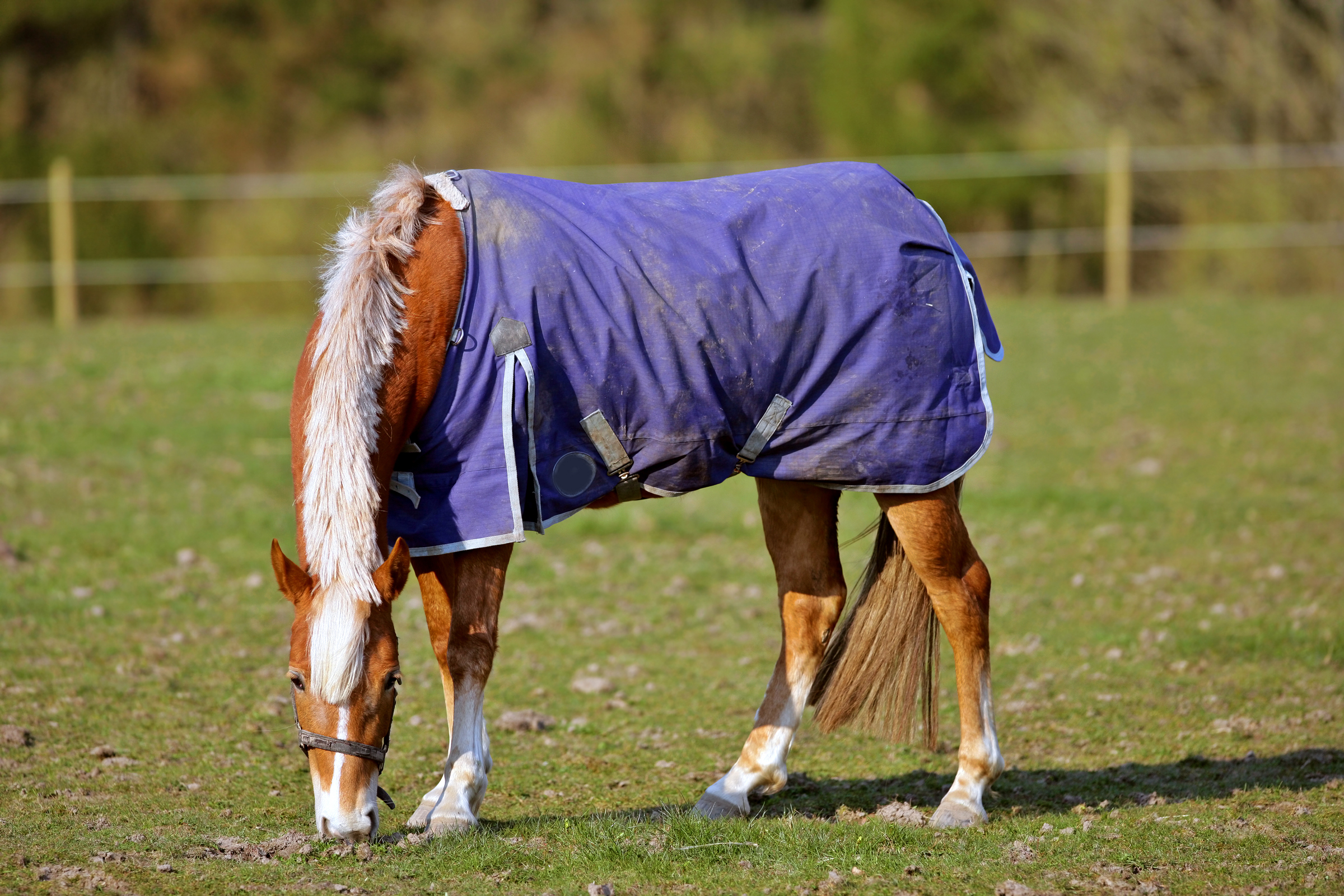
Horse blankets are great when you need them, but keeping them clean can be a chore. Like little kids, horses tend to get their clothes dirty! Then the challenge is how best to wash and dry them.
Bob Coleman, PhD, state extension specialist at the University of Kentucky, said the important thing is to read the label that came with the blanket for instructions on washing and drying. “If you no longer have that label and are not sure, go online and find the blanket company, and ask them,” said Coleman.
When washing or drying in a machine, secure all straps so hardware isn’t clunking around, catching on things and possibly tearing the blanket or damaging the inside of the washer or drier.
“I don’t recommend washing horse blankets at home unless you have a super heavy-duty machine,” said Coleman. “Some quilted blankets are really heavy when wet and may overload the washer with more weight than it’s designed for.
“In many localities, there are commercial laundromats that do horse blankets and saddle blankets as their business,” Coleman said. “They have machines that can handle the washing, and facilities to dry them properly. A couple of businesses in this area not only wash and dry your blankets, but also have a repair service. If there are any tears in the blankets, they will sew those up for you.”
Melinda Freckleton, DVM, of Firestar Farm, Catlett, Virginia, said you have to be careful washing and drying blankets at home because you don’t want to destroy the waterproofing.
“I usually send my heavy blankets out to be washed, but wash the lighter ones myself,” Freckleton said. “These can be washed in a regular front-loading washing machine, then you want to dry them correctly.
“I send the large and heavy blankets to a friend who has a business washing horse blankets and a large, well-ventilated space for drying them,” she added. “In many cases, it is easiest to hire it out rather than try to do it yourself, as long as it’s someone who does horse blankets and understands what is needed.”
A regular laundromat might not want you washing horse blankets, especially if the next person to use the machines is allergic to horse hair.
“Depending on where you live, you might have access to laundromats that welcome horse people and have certain machines dedicated for washing blankets,” said Freckleton. “If not, your best bet might be to hang the blanket on a fence and use a hose and a scrub brush.”
Horse blankets should be hung to dry, rather than put in a dryer. Heat can destroy waterproofing or damage some of the fabrics in modern horse blankets, or melt the glue that holds laminated portions together. Don’t put them in a clothes dryer unless it has a drying cycle that utilizes cool air.
“They need to be hung somewhere to dry, where there is enough air flow so there is no risk for mildew or bacteria multiplying in damp conditions,” said Freckleton. “I hang my lightweight blankets over a fence on a sunny day to let them dry.”
The UV light also helps hinder bacterial growth.
“Putting them out on the fence isn’t always possible, however, if its midwinter and the blankets turn into icicles, or if it’s a rainy day,” she added. “In those situations, I hang them in a protected place with good air flow, like my front porch or indoor arena, someplace with a roof, but lots of air. A tiny shed or your basement might not work, or your tiny six-stall barn with a small narrow aisle with no air flow.
“I almost always hang blankets inside out, so the part that’s against the horse’s skin gets a lot of UV light and air flow to get thoroughly dry,” she said. “hat’s the side where you don’t want microbes growing. If it’s a heavy blanket, you may need to eventually flip it over so the other side can get thoroughly dry as well.”
Dry-cleaning is not recommended because most of the newer blankets are Gore-Tex or other fabrics that would be damaged by chemicals in the dry-cleaning process. Gore-Tex is a lightweight, waterproof, breathable fabric invented in 1969 to repel water (and act as a wind-breaker) while allowing water vapor to pass through, designed for all-weather use.
“This material, and the next-generation types of fabric used in horse blankets, won’t do well with chemical cleaning,” she explained.
Coleman said the old style wooden drying racks keep the blanket spread out and open. “If you have to dry a blanket in an enclosed area, use a fan to create air movement,” he advised. “If it dries more quickly on the outer side, then turn it over. The main thing is to have the air circulation; it doesn’t have to be warm.”
Freckleton visited a stable recently that had a nice set-up for drying blankets. “They hung a metal gate flat (like a big rack) from the ceiling, with hooks all over it. This made a great way to hang blankets for drying,” she said.



